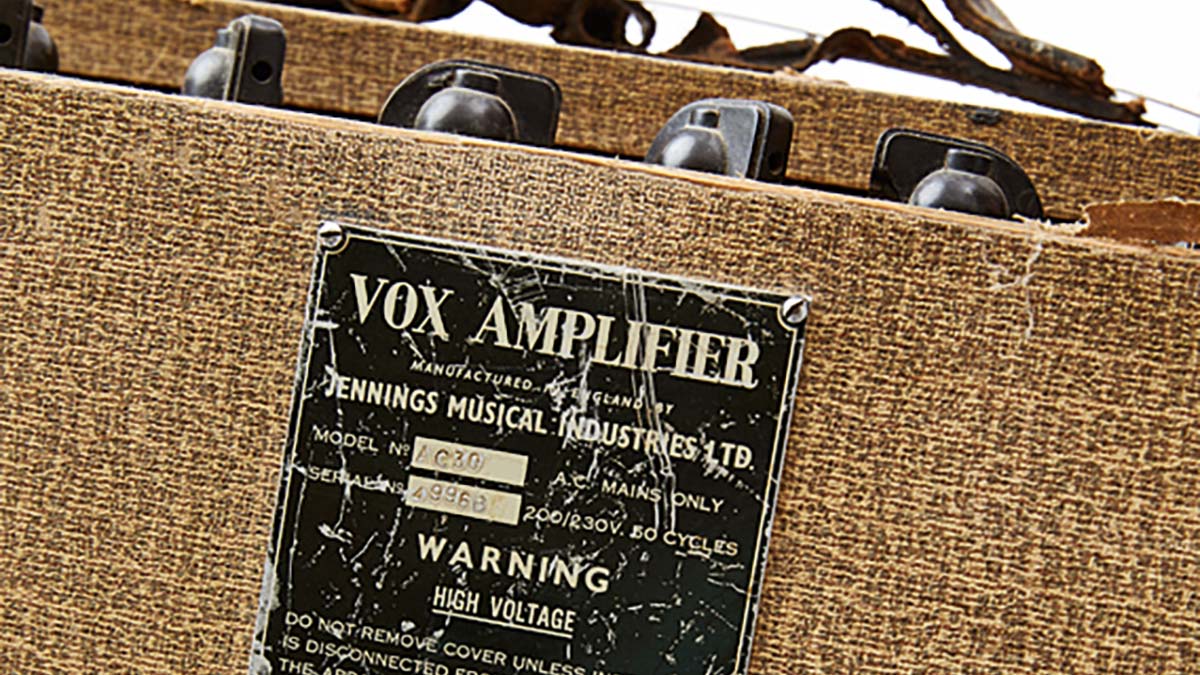How the Vox AC30 Twin found a voice of its own and became a British amp classic
Inspired by the Fender Twin, this tube combo helped establish the look and sound of Vox as we know it

Tom Jennings’ firm Jennings Musical Industries (JMI) had previously marketed the Univox, Vox Amplifier and ‘G-Series’ amplifiers before the company’s first electric guitar amp – the AC2/30 – was developed.
Appearing in late 1957, this 30-watt 1x12 combo was powered by two EL34s but never went into mass production. At the time, JMI was concentrating its efforts on the 15-watt 1x12 AC1/15 aka AC15, which was successfully released in January 1958.
In spring 1959, the 1x12 30-watt AC30 appeared. This version featured the same 1x12 speaker and square TV-front design as the AC15, but it used a pair of EL34 power valves rather than EL84s. Discontinued in 1960, it was superseded by the Fender Twin-inspired AC30 Twin model earlier that year.
This advanced design utilised a quad of EL84s and was fitted with dual 12-inch speakers. Much like Fender had done years before, the AC30 Twin updated its image away from the old TV-front look in 1960, and its new split-front design established the more familiar Vox appearance that remains popular to this day.
Though the two-channel/four-input AC30/4 Twin made it to market before the three-channel/six-input AC30/6, both circuits were designed at the same time – the original schematic is dated 29 April 1960 for both.
As far as the player is concerned, the most obvious difference between the two is the addition of a Brilliant channel, which, alongside the Normal and Vibrato channels, produces a brighter sound. The AC30/4 and AC30/6 were manufactured concurrently for around a year until the former was dropped from production in September 1961.

AC30 Twins were originally fitted with a pair of 12-inch Rola B024 speakers, but it soon became evident that the amp needed something a bit sturdier. Vox and Celestion eventually settled on a new design in August 1960. Known as the T.530, this now legendary bespoke speaker first appeared in a silver/pink colour referred to as “Oyster Hammer” but changed to the iconic azure “Vox blue” version within months.
All the latest guitar news, interviews, lessons, reviews, deals and more, direct to your inbox!
In 1961, Vox developed the Top Boost tone circuit aka the “optional brilliance circuit” in an effort to reinvigorate the amp’s appeal by helping it to cut through more during performances. It was originally available as an add-on ‘mod’, but Vox soon began fitting the Top Boost circuit at the factory.

In early 1964, the AC30 Expanded Frequency Fifteen/AC30X 2x15 model was released, fitted with a Top Boost as standard, while later that year two further versions of the AC30/6 were added to the catalogue, namely the Treble and Bass (the existing model was dubbed Normal). From 1961, the AC30 was also available in a head/cab format known as the AC30 Super Twin, incorporating a slant-sided design from 1964 onwards.
Demand for JMI’s Vox amps was growing exponentially during the mid-60s in the midst of Beatlemania and the British Invasion. Desperate for a cash injection to help his company respond, Tom Jennings sought investment from the Royston Group. Sadly, however, after selling his controlling share, in 1967 he was ousted from the very same firm he had grown and nurtured since the early 50s. It was the end of an era.
The Evolution of the Vox AC30 Twin
- Spring 1959: AC30; square cabinet; TV-front; 1x12; 2x EL34; discontinued 1960
- Spring 1960: AC30 Twin; 2 channels/4 inputs (AC30/4); 2x12; 4x EL84; TV-front; cream/diamond covering; brown diamond grille cloth
- Summer 1960: Oyster Hammer Celestion T.530 speakers (previously Rola B024)
- Autumn 1960: Also available with 3 channels/6 inputs (AC30/6); split-front; fawn covering
- Early 1961: Azure blue Celestion T.530 speakers
- September 1961: AC30/4 discontinued
- Late 1961: Top Boost circuit available; copper panel (previously black)
- 1963: Black covering
- 1964: Grey panel; charcoal covering; black diamond grille cloth; Normal, Treble and Bass versions
- 1967: Tom Jennings leaves JMI
Rod Brakes is a music journalist with an expertise in guitars. Having spent many years at the coalface as a guitar dealer and tech, Rod's more recent work as a writer covering artists, industry pros and gear includes contributions for leading publications and websites such as Guitarist, Total Guitar, Guitar World, Guitar Player and MusicRadar in addition to specialist music books, blogs and social media. He is also a lifelong musician.

